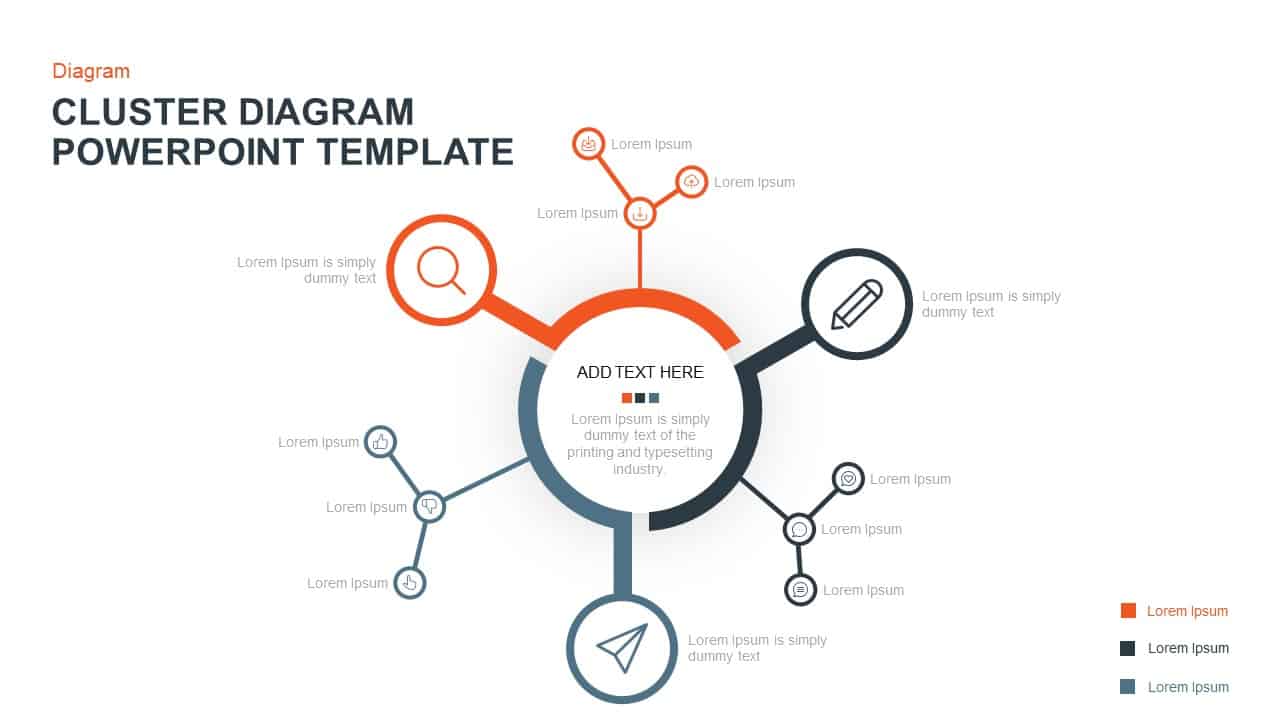Cluster Diagram PowerPoint Template

Description
Leverage this three-branch cluster diagram to visually organize complex concepts, relationships, and groupings in a clean, isometric layout. A central circle anchors the design, surrounded by three equal-weight colored arcs (orange, charcoal, teal) that radiate outward into primary hub nodes. Each hub extends into three miniature sub-nodes, connected by fine line segments and topped with customizable icons, allowing for granular breakdowns of ideas or data points. Leader lines guide attention from each node to unobtrusive text placeholders around the perimeter, ensuring your annotations remain legible without cluttering the core diagram.
Built on master slides for both PowerPoint and Google Slides, this template empowers you to swap icons in one click, adjust arc and node colors via theme palettes, or add and remove branch segments seamlessly. Vector-based shapes guarantee crisp rendering on any screen size or projector, while alignment guides and proportional spacing keep the layout balanced when resizing or reorienting to portrait or square formats. Optional entrance animations can sequentially introduce each hub and its sub-nodes, preserving narrative flow during live presentations. Export-ready for high-resolution print and PDF distribution, this cluster diagram maintains clarity and depth, thanks to subtle drop shadows and consistent stroke weights.
Who is it for
Strategy consultants, project managers, and business analysts will find this cluster diagram invaluable for mind mapping, stakeholder analysis, or process deconstruction. Marketing teams, educators, and workshop facilitators can also leverage its structured branching to guide brainstorming sessions, curriculum outlines, or feature prioritization exercises.
Other Uses
Beyond strategic mapping, repurpose this layout for product feature clustering, root-cause analyses, competitor landscape overviews, or organizational role breakdowns. Use the flexible branch system to illustrate data hierarchies, user personas, risk-factor groupings, or technological ecosystems.
Login to download this file
Add to favorites
Add to collection

















































